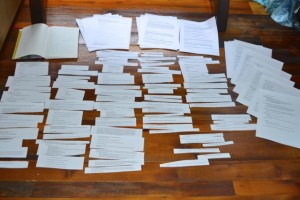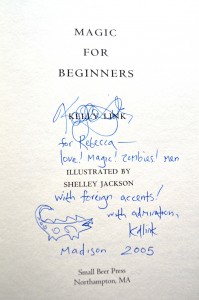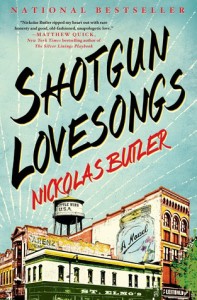 Tonight at The Readers’s Loft in Green Bay, at 6:30pm, Nickolas Butler is reading and discussing his debut novel Shotgun Lovesongs, and the kind folks at the bookstore have asked me do a Q&A with him. I really loved this story of a circle of friends in a small town in Wisconsin, so I’m particularly excited to ask all sorts of questions of the author. The event information is detailed here. Stop by for some good old-fashioned Midwestern fellowship!
Tonight at The Readers’s Loft in Green Bay, at 6:30pm, Nickolas Butler is reading and discussing his debut novel Shotgun Lovesongs, and the kind folks at the bookstore have asked me do a Q&A with him. I really loved this story of a circle of friends in a small town in Wisconsin, so I’m particularly excited to ask all sorts of questions of the author. The event information is detailed here. Stop by for some good old-fashioned Midwestern fellowship!
Category Archives: Uncategorized
BOO! My list of “12 Haunting American Stories” at @ElectricLit!
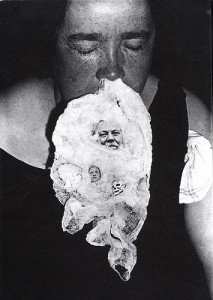 Wondering what short stories to read this Halloween? Here’s my list of spooky, funny, absurd, horrifying, and tragic American ghostly short stories, featuring titles by Dan Chaon, Kelly Link, Stephen King, Charles Chesnutt, Benjamin Percy, and more!
Wondering what short stories to read this Halloween? Here’s my list of spooky, funny, absurd, horrifying, and tragic American ghostly short stories, featuring titles by Dan Chaon, Kelly Link, Stephen King, Charles Chesnutt, Benjamin Percy, and more!
My Writing Process — Blog Tour!
The wonderful writer Kathy Fish tagged me to be a part of the Writing Process Blog Tour. (Also, I’m grateful for Kathy Fish’s flash fiction, which inspires and teaches me, always.)
Now I shall pose some questions to myself— and answer them.
Q. So, Rebecca. You’ve written two collections of short fiction. What are you working on now?
A. [Laughs] Ha! Everything and nothing! Did you ever have a luxurious pocket of time set aside for writing, and your day job is on hold for the summer, and you’ve got childcare for your kids and daycare for your dog and your spouse is supportive— and all you do is sit at your computer, staring, stopping only to pound your head against your desk?
Already, I’ve written more and better words on this blog post than I have all summer.
That said, my projects include a big, complicated novel set in 1871 Wisconsin, in the months leading up to the Peshtigo fire, which occurred the same night as the Great Chicago Fire. On the side, I’m writing some fairly juicy short stories (telekinesis! maiming! naughty nannies!) and some rather sad nonfiction. Plus, I also blog about writing for Ploughshares.
Q. Interesting. How does your work differ from others of its genre?
A. That’s a great question.
Q. I thought so. [Laughs]
A. To answer your question, the 1871 novel is historical and multi-vocal— lots of characters’ voices and perspectives— and it follows three families whose lives are dramatically changed by the fire (which killed around 2000 people). It’s kind of like Ragtime meets A Visit From the Goon Squad meets Love Medicine, or so I hope.
Plus, there’s a chapter narrated from the point-of-view of a comet.
Q. A comet! That’s genius!
A. I thought so. [Laughs]
Q. Why do you write what you do?
A. I’m interested in what’s left unsaid—whether that’s due to a character’s position, self-repression, inexperience, or powerlessness. Vantage points outside of, and overshadowed by, another, larger story. (The Peshtigo Fire of 1871 is an example— it’s often called “the Forgotten Fire.” I mean, have you heard of it?) One of my favorite recent writing experiences was using the language of an 1874 primer to express the pain and escape of girls at an Indian Boarding School. I’ve written elsewhere about the joys and challenges of constraints in fiction. Even in my nonfiction, I’m drawn to moments in my own experience that are the hardest to articulate.
Q. How does your writing process work?
A. Usually, a character’s voice, or a line of dialogue, or a question creates an intellectual irritation. A grain of sand for the oyster. A lost tooth in the gum line. Pick your metaphor; all I know is that I can’t leave it alone until I’ve either made something interesting— or tangled myself into messes too difficult to straighten.
My energy is highest when that irritant is new. Most of the time, the first section or opening lines of a piece fall out quickly and completely. Then, there’s the long, dismal middle of despair, when I have no idea what to do next. This can last for years. [Sighs]
Q. Well, I, for one, feel edified by this conversation. Who’s next on the Writing Process Blog Tour?
A. I’ve asked the following marvelous writers to join the tour. Look for their responses on their own blogs on July 31!
Lisa Mecham writes a little bit of everything. Her work has appeared in The Rumpus, Barrelhouse Online and Juked, among other publications. A Midwesterner at heart, Lisa lives in Los Angeles where she’s revising her first novel and of course, writing a screenplay. Visit her website here: http://lisamecham.com
Kelcey Parker is the author of LILIANE’S BALCONY (Rose Metal Press), a novella set at Frank Lloyd Wright’s Fallingwater. Her story collection, FOR SALE BY OWNER (Kore Press), won the 2011 Next Generation Indie Book Award in Short Fiction, and her stories have appeared in Notre Dame Review, Bellingham Review, Santa Monica Review, Indiana Review, Third Coast, Redivider, Western Humanities Review, and Image. She blogs at: http://phdincreativewriting.wordpress.com/
Of All Things: The Signature—How Do You Sign A Book?
Today, on the Ploughshares Blog: It’s the simplest of challenges: signing your own book for people who have purchased it. And yet, I suck at it. In fact, I have Book-Signing Anxiety. Joining me with their triumphs and failures at book-signings are Alan Heathcock, Juliana Gray, Dan Albergotti, and Lauren Becker. Come read all about it here.
A 500-word slice of my novel-in-progress— now @IndianaReview!
 I’m thrilled to see my flash fiction, “Mrs. Williamson Winds the Watch,” in the summer Indiana Review— alongside the work of so many fantastic writers. This publication is a triple happiness: it’s a 500-word slice of my Peshtigo-fire novel, it’s a 2013 “Half-K Prize” finalist, and it’s my 3rd story to appear in Indiana Review. (P.S. I love you, Indiana Review.)
I’m thrilled to see my flash fiction, “Mrs. Williamson Winds the Watch,” in the summer Indiana Review— alongside the work of so many fantastic writers. This publication is a triple happiness: it’s a 500-word slice of my Peshtigo-fire novel, it’s a 2013 “Half-K Prize” finalist, and it’s my 3rd story to appear in Indiana Review. (P.S. I love you, Indiana Review.)
“I knew I had a problem when I started envying my dog’s cone collar.”
Today, on the Ploughshares blog, my latest post on the obsession of research, and some tips to rein it in. Plus, a little known fact: a surprising number of research inquiries lead to vintage porn.
My story “Beached” long-listed for Wigleaf’s Top 50 Very Short Fictions of 2014!
Well, what a nice way to start the day. My flash fiction “Beached,” first published in Necessary Fiction, was long- listed as one of the top 200 Very Short Fictions of 2014, compiled by Wigleaf magazine. The annual Wigleaf Top 50 is a list of the best of the best— it’s where I go to learn how to write this thing called “Flash Fiction”— so I’m thrilled to have my work even considered for this collection. Congratulations to the Top 50 writers– please read this collection, they’re fantastic. And thanks to Steve Himmer and Scott Garson and all the good folks at Wigleaf, who read and edit collections of flash—and ignite our aspirations.
“Beached” is also available in Morbid Curiosities, which you can learn more about here.
WWTMD? (What Would Toni Morrison Do?)
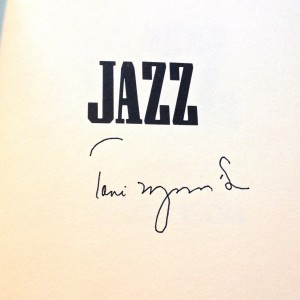 As a writer, as a person, it’s the closest I get to prayer: What Would Toni Morrison Do? How the Nobel Laureate guides me, new at the Ploughshares blog.
As a writer, as a person, it’s the closest I get to prayer: What Would Toni Morrison Do? How the Nobel Laureate guides me, new at the Ploughshares blog.
(<—- Signed first edition of Jazz, courtesy of my husband on my birthday [today].)
496 Words on Writing Flash Prose. (Or, Nimbility: Shouldn’t that be a word?)
“Walking this tightrope of tension—evoking emotional shifts, revealing information—requires a writer’s nimbleness, agility. Nimbility. (Shouldn’t that be a word?)”— from my 496-word Ploughshares blog post on writing, reading, submitting, and working with flash prose, even if you’re trying to write a novel.
“A tiger injected with diazepam will eventually fall quiet.”– My nonfiction flash, published today at @SuperstitionRev.
Sometimes, without meaning to, we let tigers into our living rooms. “The Lady, The Tiger” recounts my experience from a past life–today, in the GORGEOUS new issue of Superstition Review.

